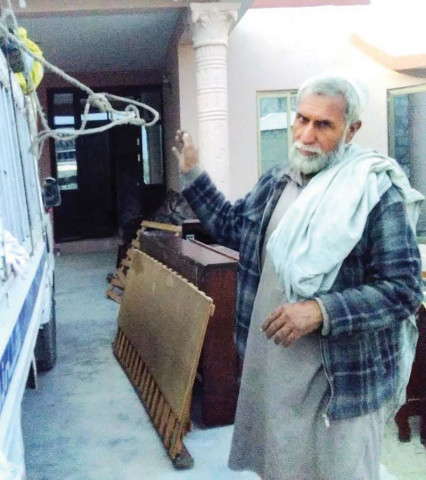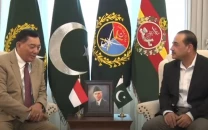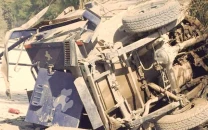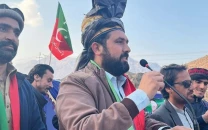In search of a future: Bajaur native finds a life worth living in Gilgit
Sher Zada has been living in the area for three years working as a labourer

Sher Zada has been living in the area for three years working as a labourer.
People like Sher Zada had fled violence in Bajaur Agency over three years ago, a little before Operation Zarb-e-Azb began. He followed many others who made their way to Gilgit to seek out better living.
“It has been three years since I came to this part of the world,” says 45-years-old Zada, who works as a labourer in Gilgit.
Zada is the main breadwinner of his eight-member family.
When violence and terrorism affected economic opportunities in the Agency, he had to look elsewhere to earn a livelihood.
“There were virtually no means whatsoever to earn a living in the valley and I preferred to work hard instead of indulging in ‘unacceptable activities’,” Zada told The Express Tribune this week while referring to the extremism there.

“That’s why I am here [in Gilgit] today.”
The well-built man mostly finds work at truck stands, eking out a living loading and unloading trucks. He sets out for the truck yard early in the morning and usually returns to his rented room late in the evening.
“My income is reasonable, you can say that,” Zada says, his smiling face belying the reality of the meagre returns for the strenuous physical work he puts in. When asked how much he makes every day, he remains coy.
“On average, I am able to send about Rs10,000 back to my family every month.”
There are many people like Zada living and working in Gilgit-Baltistan. More outsiders than locals own businesses relating to import and export of goods from China or construction. However, Zada’s work is not constant.
The Bajaur native says sometimes people hire him for manual labour work such as levelling the ground. On other occasions, people pay him to help move heavy objects while shifting their homes. But mostly, he spends his time at the truck stand.
However, at all times he is thinking of home and his family. Any time there is news of trouble in his hometown, Zada says he gets upset and thinks of returning home.
“That’s why I left my hometown. But I may not live here for long either if the situation there turns normal,” he says as he describes his dream of living a respectable life in peace.
Bajaur Agency is located in the Federally Administered Tribal Areas (Fata) and has a population of around 0.7 million people. The Tarkani tribe is the most dominant tribe in the area with the Utman Khel, Tarkalanri, Mamund the other significant tribes in the agency.
It shares a 52 kilometre-long border with Afghanistan’s Kunar Province. Since Soviet invasion in 1980, the area was a critical staging ground for Afghan and local mujahidin to organise and conduct raids. However in August, 2012, the Pakistani Army de-notified Bajaur as conflict zone.
Published in The Express Tribune, November 28th, 2016.



















COMMENTS
Comments are moderated and generally will be posted if they are on-topic and not abusive.
For more information, please see our Comments FAQ